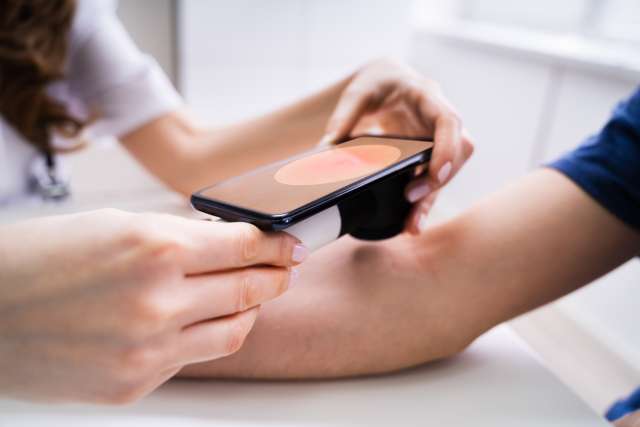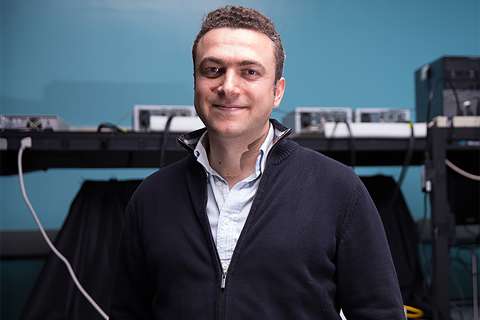A new study by UCLA scientists and colleagues adds further proof to earlier findings by Dr. Claire Lugassy and Dr. Raymond Barnhill of UCLA's Jonsson Comprehensive Cancer Center that deadly melanoma cells can spread through the body by creeping like tiny spiders along the outside of blood vessels without ever entering the bloodstream.
In addition, the new research, published March 6 in the journal Nature, demonstrates that this process is accelerated when the skin cancer cells are exposed to ultraviolet light. The husband-and-wife team of Barnhill and Lugassy collaborated on the study with a team from Germany's University of Bonn led by Dr. Thomas Tuting.
It is well known that melanoma cells from an initial tumor can travel through the bloodstream to other parts of the body, where they accumulate and form new tumors. Through such metastasis, a small skin cancer can become life-threatening by spreading to the brain, lungs, liver or other organs.
Fifteen years ago, Lugassy and Barnhill first discovered and described an alternative metastatic process, which they called extravascular migratory metastasis, or EVMM, by which melanoma cells could move along the outside, or abluminal, surface of blood vessels by way of angiotropism — a biological interaction between the cancer cells and the blood vessel cells. Since then, Lugassy and Barnhill have continued to assemble a body of scientific evidence confirming the existence of this metastatic pathway of cancer cells.
With angiotropism and EVMM, the cancer cells may replace tendril-like cells called pericytes, which are normally found on the outsides of blood vessels, through a process called pericytic mimicry. Imitating the pericytes, the melanoma cells creep along the length of blood vessels until they reach an organ or other point where they accumulate to form new tumors, "potentially explaining the delay between the detection of the primary cancer and the appearance of distant metastases," said Barnhill, a professor of pathology at UCLA.
"At first our idea was controversial," said Lugassy, a UCLA associate professor of pathology. "But mounting evidence confirming angiotropism and EVMM has revolutionized the knowledge of how cancer spreads through the body to the point that other scientists have confirmed the process in other solid-tumor cell types, such as pancreatic cancer."
In the new Nature study, EVMM was observed again by Tuting, Lugassy, Barnhill and their colleagues in a genetically engineered mouse model of melanoma. The researchers also found that the immune systems of mice exposed to ultraviolet radiation responded with inflammation that accelerated the angiotropism, increasing the level of EVMM and leading to more lung metastases than among the mice not exposed to UV light.
This study was conducted at the Laboratory for Experimental Dermatology in Bonn, under the direction of Tuting.
"We have known for a long time that UV radiation is a factor in the development of melanoma," Barnhill said, "but in this study, the melanoma was already present in the mice."
Tuting observed that UV light provoked inflammation at the site of the tumor, which caused the mouse immune system to attract a type of common white blood cells known as neutrophils. The neutrophils, in turn, promoted angiotropism.
With this new knowledge — and the confirmation of Lugassy and Barnhill's research on angiotropism and EVMM — researchers in the scientific community can now begin looking for a drug target that will interfere with this EVMM process. Because the danger of melanoma comes from its metastasis from the skin to the vital organs, being able to slow down or stop this process could turn a disease that is often a death sentence into a manageable chronic illness with relatively little risk of death.
This research was supported by the Melanoma Research Network, Jurgen Manchot Stiftung, the American Institute for Cancer Research and the Deutsche Forschungsgemeinschaft (German Research Foundation).



